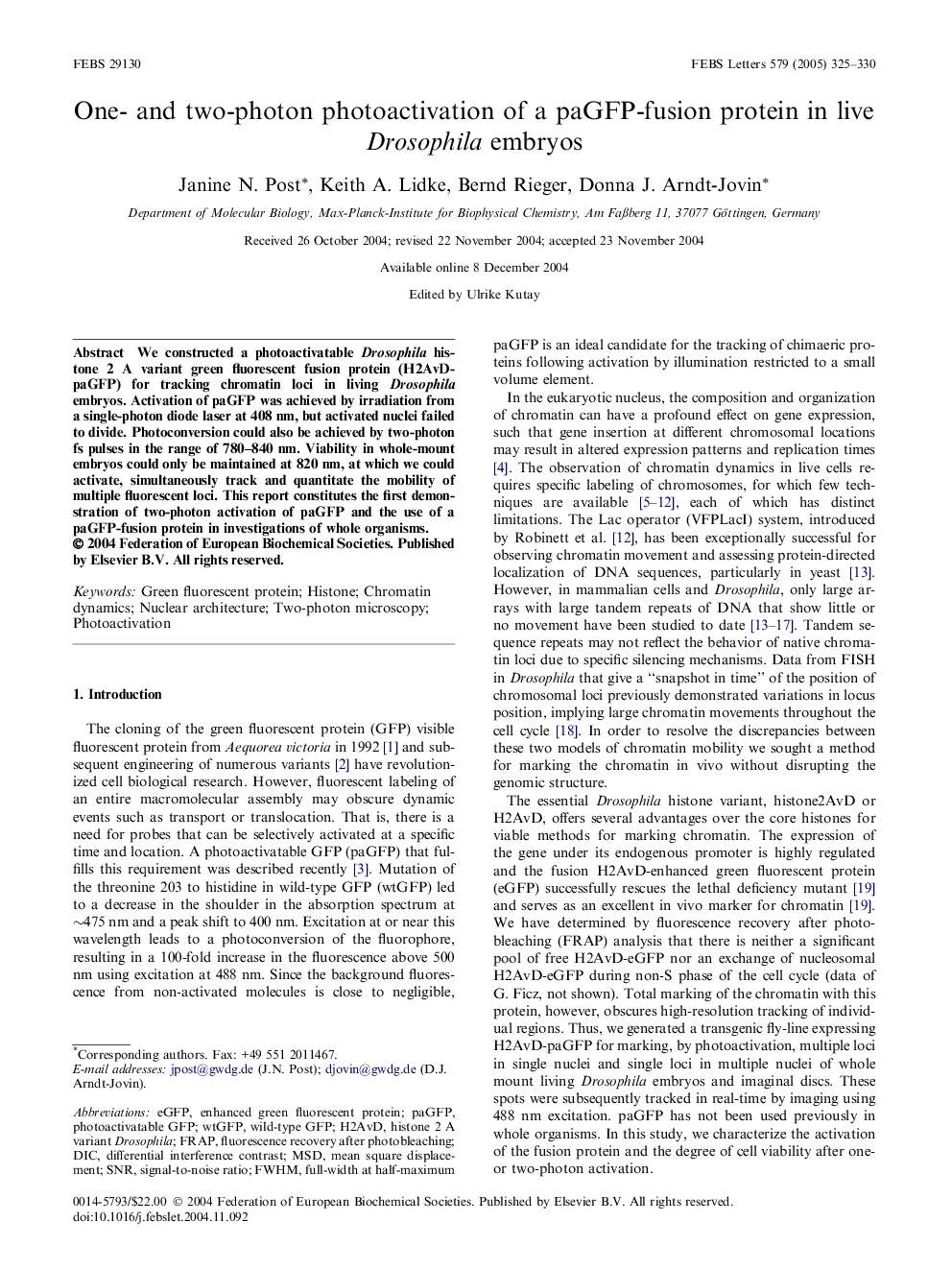| Article ID | Journal | Published Year | Pages | File Type |
|---|---|---|---|---|
| 10872651 | FEBS Letters | 2005 | 6 Pages |
Abstract
We constructed a photoactivatable Drosophila histone 2 A variant green fluorescent fusion protein (H2AvD-paGFP) for tracking chromatin loci in living Drosophila embryos. Activation of paGFP was achieved by irradiation from a single-photon diode laser at 408 nm, but activated nuclei failed to divide. Photoconversion could also be achieved by two-photon fs pulses in the range of 780-840 nm. Viability in whole-mount embryos could only be maintained at 820 nm, at which we could activate, simultaneously track and quantitate the mobility of multiple fluorescent loci. This report constitutes the first demonstration of two-photon activation of paGFP and the use of a paGFP-fusion protein in investigations of whole organisms.
Keywords
DICFWHMeGFPSNRFRAPMSDMean Square Displacementchromatin dynamicsfull-width at half-maximumPhotoactivationfluorescence recovery after photobleachingNuclear architectureTwo-photon microscopySignal-to-noise ratioHistonegreen fluorescent proteinenhanced green fluorescent proteindifferential interference contrast
Related Topics
Life Sciences
Agricultural and Biological Sciences
Plant Science
Authors
Janine N. Post, Keith A. Lidke, Bernd Rieger, Donna J. Arndt-Jovin,
